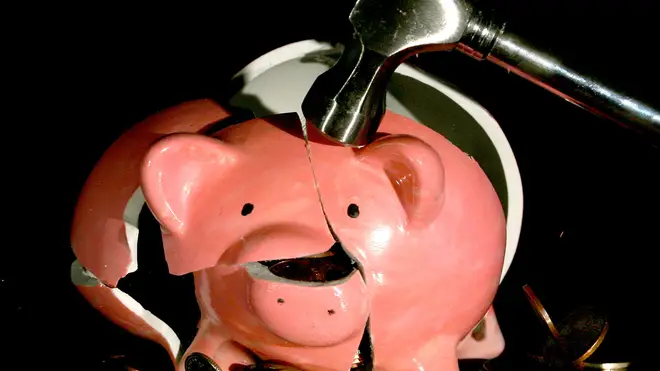
Natasha Devon 6pm - 9pm
28 January 2022, 10:54

The Insolvency Service said there have also been 41,127 registrations following the launch of a debt ‘breathing space’ scheme last year.
The number of people going bankrupt across England and Wales last year was the lowest since 1989, according to official figures.
The decrease helped the overall number of personal insolvencies fall to a four-year low last year.
Some 110,022 personal insolvencies were recorded last year, which was 10% lower than pre-pandemic levels in 2019, the Insolvency Service said.
Last year’s total was the lowest since 99,093 personal insolvencies were recorded in 2017.
Bankruptcy numbers were down by nearly a third (31%) compared with 2020, which the service said is likely to have been driven in part by enhanced government support for individuals and businesses.
The total number of bankruptcies recorded last year was 8,688 – the lowest annual total since 1989.
Colin Haig, president of insolvency and restructuring trade body R3 and head of restructuring at Azets, said: “The figures published today can’t disguise the fact that the last 12 months have taken a toll on people’s finances in England and Wales, not to mention the concern members of the public have about their financial futures and the future of the economy.
“While the Government’s support measures have helped a great many people over the last year, they haven’t been able to help everyone.
“Levels of personal debt have increased, and household debt is predicted to increase later this year as households attempt to balance their books amid rises in inflation and energy prices and falling wages.”
“Anyone who is worried about their finances should seek advice now rather than letting their problems spiral. We know it can be incredibly hard to talk about money, but it’s better to have the conversation as soon as you can, so you have a broader range of options and time to make a considered decision about your next steps.”
As well as bankruptcies, which tend to be seen as a last resort, total personal insolvencies are also made up of debt relief orders (DROs) which are aimed at people with lower levels of unmanageable debt, and individual voluntary arrangements (IVAs) whereby agreements are made with creditors.
The number of DROs registered in 2021 was similar to 2020.
But IVAs reached a record high last year, accounting for nearly three-quarters (74%) of personal insolvency cases.
Some 81,199 IVAs were recorded in 2021, which was a 4% increase when compared with both the previous year and 2019.
IVA numbers have been increasing for the past five years, the Insolvency Service said.
Its report added: “Since the start of the coronavirus (Covid-19) pandemic until mid-2021, numbers of bankruptcies and DROs remained low when compared with pre-pandemic levels.
“This is likely to have been driven in part by the range of government support put in place to financially support individuals during this time.”
On June 29 last year, the maximum level of debt people can have when applying for a DRO was increased from £20,000 to £30,000.
Since the changes to the eligibility criteria, numbers of DROs have increased, but remain below pre-pandemic levels, the Insolvency Service said.
A “breathing space” scheme was also launched on May 4 last year, giving people legal protections from their creditors for 60 days, with most interest and penalty charges frozen, and enforcement action halted.
Because problem debt is often linked to mental health issues, these protections are also available for people in mental health crisis treatment, for the duration of their treatment plus 30 days.
Between the launch of the breathing space scheme and the end of 2021, there were 41,127 registrations, made up of 40,503 “standard” registrations and 624 mental health breathing space registrations.
The service also said there were 14,048 company insolvencies last year, which was higher than the 12,634 registrations in 2020, but still below pre-pandemic levels.
The increase compared with 2020 was driven by the highest annual number of creditors’ voluntary liquidations (CVLs) since 2009.
However, the number of CVLs in 2021 was only slightly higher than in 2019 and was consistent with an increasing trend in CVL numbers before the pandemic, the service added.
Its report said: “The increase in CVLs in the second half of 2021 coincided with the phasing-out of measures put in place to support businesses during the coronavirus pandemic.”
Increases in insolvencies were seen across most industries year on year, with sectors including professional, scientific and technical activities and construction experiencing rises which were above the overall average.